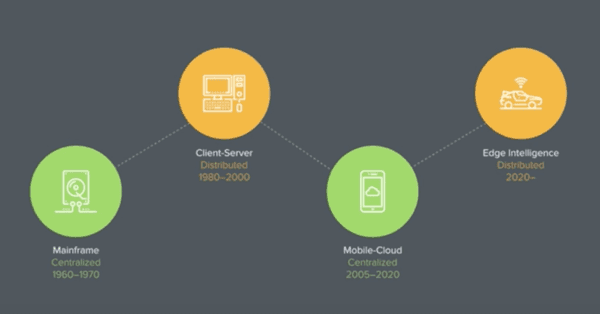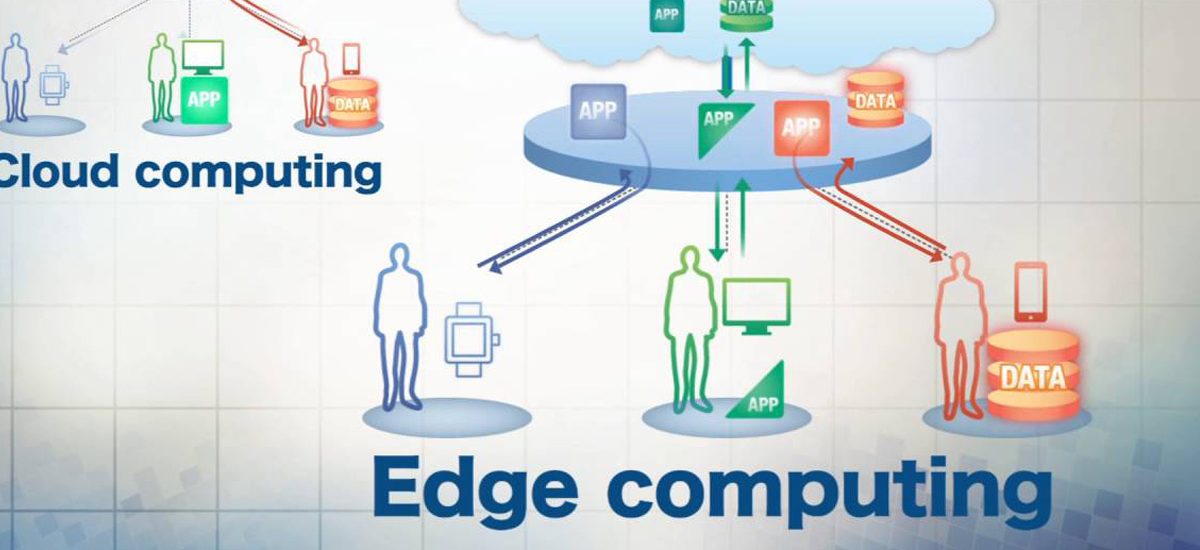
The Insider Secrets to Building A Web Project Scope Of Work
October 6, 2017
This Week in Getting Hacked: Pray Your SMB Doesn't Get Hacked Edition
October 11, 2017On this Page…
IT buzzwords are great, aren’t they? The biggest one of them all, “The Cloud,” took the world by storm—when really, as we all know, it’s just software breaking up hardware somewhere in a data center.
Now there’s “Edge Computing” which is basically the same thing, but with some striking and very interesting differences.
In fact, we talked about it some in the past when predicting IT for 2017.
What is Edge Computing?
The most succinct definition of edge computing comes from the research firm IDC:
Edge computing is a “mesh network of micro data centers that process or store critical data locally and push all received data to a central data center or cloud storage repository, in a footprint of less than 100 square feet.”
The most common use of edge computing is when dealing with the data coming from IoT devices. These edge devices collect the data and send it to a data center (or “cloud”) for processing. What the edge does is process some of the data “locally” (or pretty darn close) thus reducing the traffic to the central center.
Here’s a fantastic infographic from NetworkWorld.com that shows this process “in motion:”
In theory this sounds like a good idea. Place smaller data centers at more locations to break up the load coming from the massive DCs. But what does this all mean?
Can Edge Computing Supplant the Cloud?
A general partner at venture capital firm Andreessen Horowitz, Peter Levine, suggests that cloud computing will soon take second place to edge computing in the near future.
Levine argues that the insane amount of autonomous cars, drones, and IoT robots cropping up everywhere will require a faster processing process than communicating with cloud networks at a central location.
Therefore, edge computing will be able to deliver the rapid processing requirements of these devices far more quickly than the cloud. After all, Levine says that a self-driving car is “effectively a data center on wheels.”
So, after around a decade of the IT world trying to get everyone to switch to the cloud, now everyone will have to consider edge computing—just like that!
Not to worry, though (well, not yet at least), cloud computing will still be a mainstay for years to come, but it will act more like and ongoing, off-site processing plant for machine learning purposes while handing off the more immediate processing to edge computing.
This shouldn’t shock anyone, as Levine also suggests. Computing has gone back and forth from centralized to distributed to centralized to distributed many times since inception. In fact, here’s another handy infographic detailing that as well:

So if the year 2020 is the date for the edge computing shift how will it impact business? Why are so many companies, like AT&T, investing?
How Edge Computing Will Change Business
Remember that IDC report mentioned above? It also states that in just two years 45 percent of data created by IoT will be stored, processed, analyzed, and acted upon by edge computing—and by the year 2020, just like Levine envisioned, over 5 billion devices will be connected at the edge of the network. That’s just incredible.
It stands to reason then that business (and thus the economy) will have to adapt as well.
Here are some ways that edge computing will impact business:
Solution Costs of IoT devices will lessen
Since there’s less traffic going back and forth to data centers, IoT solution costs will be easier to manage since businesses can decide what information gets sent where.
Dependable Operation
Since most of the processing takes place at the source, even during times of intermittent connectivity, edge computing will allow the devices to operate normally—which will be a big deal when all those devices need to be connected to the internet at all times to actually, you know, work.
More Security
Security and compliance has stopped many businesses from even adopting the cloud. However, as you might expect, edge computing will solve this problem too. Personal information will be processed locally under the security requirements implemented by the business rather than sending off this information to the cloud where security might not be up to snuff (even if advertised as such).
Speed, speed, speed!
Even though things move very quickly to and from the cloud, there are still latency issues when data hops around the world. For many of the same reasons mentioned above, edge computing will mean faster response times for many internet-connected devices.
Edge Computing and Natural Disasters
One thing that doesn’t get mentioned enough when people talk about edge computing is the benefits it adds during natural disasters.
Sure, if a data center gets knocked off during a disaster, then edge computers can pick up the load, but some say edge networks must be programmed to keep the internet alive during these times.
IoT devices collect their data which is then stored locally where emergency officials can access it. This could save not only countless dollars in data, but lives as well.
In fact, the Georgia Institute of Technology says that:
“Using computing power built into mobile phones, routers and other hardware to create a network, emergency managers and first responders will be able to share and act on information gathered from people impacted by hurricanes, tornados, floods and other disasters.”
Edge computing is an exciting prospect. Much like the cloud, I’m certain it’ll take some effort to get people to adopt. But the benefits are there and they should be utilized. Unless an EMP occurs our lives are only going to get more and more connected. Something’s that put in place to handle that will only make the world a better place!

